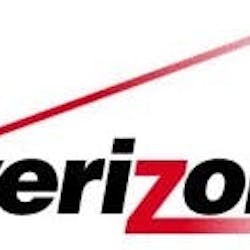Nokia introduced its new symmetrical 25G PON fiber modem, the U-010Y, which is designed for multi-Gigabit connectivity to any endpoint: homes, enterprises, or mobile cell sites.
The compact solution, installed on a wall, inside a building, or in an outdoor enclosure, helps accelerate 25 G PON deployments further. It immediately delivers internet speeds that are 20x faster than current gigabit solutions.
Once deployed, service providers leverage their existing fiber network to offer new premium residential, business, or haul services that unlock additional revenue streams.
The new 25G PON fiber modem complements Nokia’s growing 25G PON portfolio, which includes the Lightspan FX, DF and MF fiber access platforms (OLTs) and the industry’s first 25G PON sealed fiber access node designed for cable operators.
Multiple use cases
Nokia’s new 25G PON fiber modem allows operators to establish a future-ready network that immediately addresses the growing demand for more capacity and enhanced broadband services. The new 25G PON solution enables operators to quickly upgrade their existing GPON or XGS PON network to deliver 10 Gbps speeds and beyond.
Enterprises can use the platform to improve business productivity and enhance connectivity to the cloud or value-added applications in data centers. The solution provides immediate access to additional capacity for consumers and power users to support bandwidth-hungry applications such as AI, gaming, or security.
The platform will also find utility in wholesale carrier situations, supporting demarcation point functions for enterprise and wholesale services.
A wholesale provider or wireless operator can connect cell sites to transport mobile traffic over a PON network in plug-and-play mode, delivering the required capacity, latency, and synchronization for 5G networks.
“The 25G PON eco-system is growing and with it, the technology that continues to bring concrete business benefits to customers,” said Geert Heyninck, general manager of broadband Networks at Nokia.
25G momentum grows
The momentum around 25G continues to rise amongst the vendor and service provider communities.
One of the significant signs came from Google Fiber, which announced late last year that it would be using 25GS-PON and a Wi-Fi 7 router to deliver symmetric 20Gbps residential services through its Gfiber Labs Division.
GFiber Labs provides 20Gbps service to the University of Missouri-Kansas City and the United Way of Utah County. Still, the provider plans to extend service to subscribers in select markets, including Kansas City, Raleigh-Durham, and markets in Arizona and Iowa.
In a recent research post, Jeff Heynen, VP at Dell’Oro Group, wrote that Google Fiber’s forward-looking mentality provides a proof point for 25G PON.
"Google’s cache as an innovative ISP, along with its demonstrated ability to change the competitive dynamics in the markets where it offers FTTH services, has helped spark additional industry interest in 25GS-PON for not only high-end residential services but also services for enterprises, campus environments, access network aggregation, and wholesale connections,” he wrote.
Heynen also noted that membership in the 25GS-PON MSA (Multi-Source Agreement) Group has continued to grow. It now includes many service providers, equipment vendors, and component suppliers.
“Membership in the 25GS-PON MSA (Multi-Source Agreement) Group has grown substantially, now encompassing a diverse range of service providers, equipment vendors, and component suppliers,” he wrote. “Most importantly, product development for critical equipment, including ONTs and coexistence elements, has accelerated. At least ten different ONT vendors have joined the MSA. These vendors have decades of experience designing ONTs as either OEMs or ODMs. A diverse vendor ecosystem for ONTs is critical for service providers to feel comfortable deploying the technology.”
Other factors driving interest in 25G PON are its ability to coexist with GPON and XGS-PON and its ability to leverage network infrastructure to address various applications.
“One of the driving factors for the growing interest in 25GS-PON is its ability to coexist with GPON and XGS-PON without having to deploy additional feeder fiber, splitters, or other ODN elements,” Heyen wrote. “The other is the ability for service providers to expand the addressable markets of their PON networks to support residential, enterprise, mobile transport, and wholesale services over a shared infrastructure with sub-millisecond latency and guaranteed capacity.”
For more news, products, and technical profiles in broadband cable and telecommunications technology, subscribe to BTR's newsletter and follow us on LinkedIn, Twitter, and Facebook.







